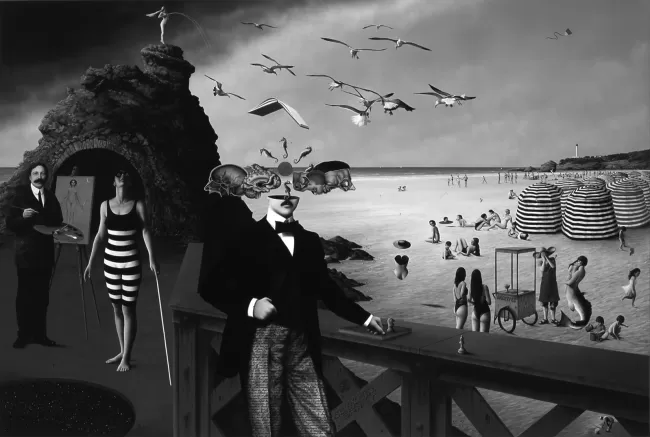Final Destination

On July 14th, 1933, the French National Day, Dr. Farina determined that Raymond Roussel’s death resulted from an overdose of barbiturates. In Room 142 at the Grande Albergo delle Palme in Palermo, the hotel in which Richard Wagner finished his Parsifal, Raymond Roussel ended his life. The circumstances which ultimately led to his death are as enigmatic as the entire life of this exceptional French writer.
Born in 1877 into an immensely wealthy Parisian family, Raymond Roussel was perhaps the most extraordinary writer of the last century. His bizarre works and utterly eccentric lifestyle have attracted enthusiastic critical responses from his most illustrious contemporaries. Roussel was at the forefront of anti-tradition in French writing that influenced modern art and modernism at a fundamental level. That he chose the famous Grandhotel des Palmes in Palermo for his final act seems not an accident, but part of an ingenious master plan to leave an unsolved enigma on his literary oeuvre and his entire life. He was sure that his fame would outshine that of Victor Hugo, or even Napoleon.
Before departing from Paris, he entrusted his publisher with the posthumous publication of a book that would finally reveal the method with which he constructed the writing of several of his books. How I Wrote Certain of My Books was published two years after his death and earned him the recognition he had craved during his short life. The book decoded his writing method, which was based on phrases of phonetic equivalence and almost identical spelling, but with entirely different meanings. His stories would start with the one phrase of a pair and conclude with the other. Upon establishing a sentence with a double meaning, he would solve the problem of uniting the pair, regardless of disparity, obscenity, or contradiction, by formulating the relationship on the most realistic level possible. Ultimately, he created rational and logical stories to relate his homonymous constructions. These pairs of almost homophonic and homonymous phrases presented incoherencies, which, using Roussel’s method, could only be solved by logic. Within this intellectual shift, Raymond Roussel created entire plots and delved into a place that had not yet been explored in literature. He took full advantage of the simple but fundamental fact of language: that there are fewer terms of designation than there are things to designate.
For the first time, a detour became the program of an entire literary work. This was Roussel’s compositional technique which almost automatically delivered a structure for the plots and images of his writing, in much the same way that meter and rhyme control the arrangement of words in a sonnet.
Projecting this concept onto the life of the excellent piano performer, chess player, trophy collecting pistol shooter, and dandy traveler, one would think that, in addition to his last will, the way he staged his own death would also be part of this construction. In fact, the final enigma of Roussel’s construction remains unknown today. Even the Italian author Leonardo Sciascia, who in 1979 used his criminological talents to investigate the cause of death, ended up before a closed door similar to the closed door, locked from the inside, of Room 142 where Raymond Roussel spent his last night.
Writing about Roussel as an architect is an interesting experiment. In his works, he strove for complete aesthetic control of the standards that he created. Simultaneously, he developed methods driven by form that enabled his literary transformations. His technique serves as a tool for unifying oppositions. The resulting text must simply accept the permanent confrontation with incoherencies. In his works, these incoherencies are self-imposed and idiosyncratically constructed. In architecture we too constantly deal in incoherencies, which today we often perceive negatively. However, rather than producing a technique which creates incoherencies, we are confronted with incoherencies and attempt to develop techniques to resolve them.
It is as if, in his writings Raymond Roussel foresaw the condition that we as architects confront today. In contrast to Roussel, who was a genius, contemporary architects no longer need to be brilliant. Today, the talent to read incoherencies is the key to understanding and producing architecture. While Roussel worked to integrate opposing phrases into one overall construction, he employed the oppositions inherent in his homophonic sentences as engines to conquer discrepancies and as the technique to maneuver these incoherencies and produce his writings.
Today, architecture can find vitality in the fact that there are more things to designate than there are forms for designation. Perhaps Palermo is, in fact, the final destination for a coherent construction. A construction defined by only a few choices, but by many possibilities.